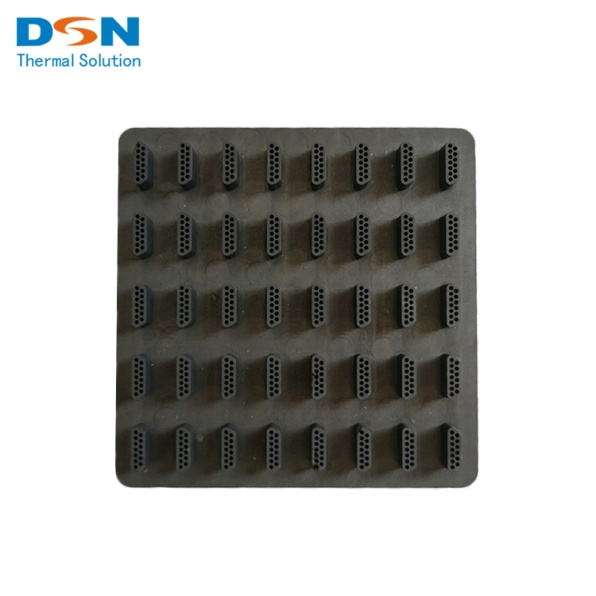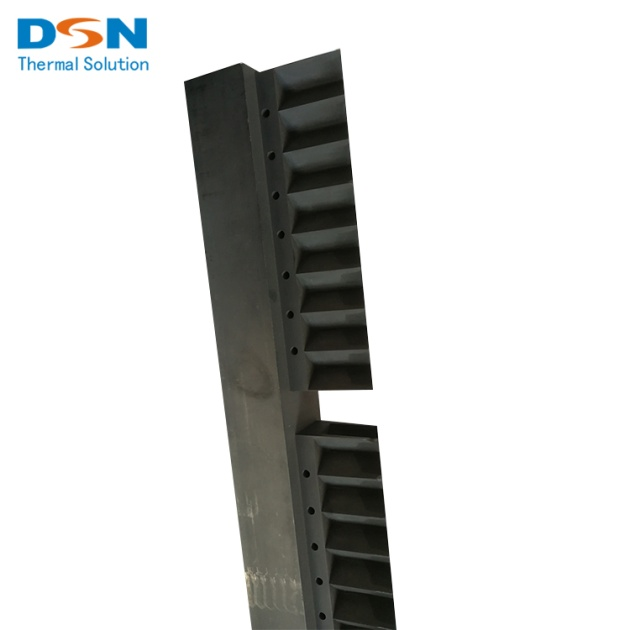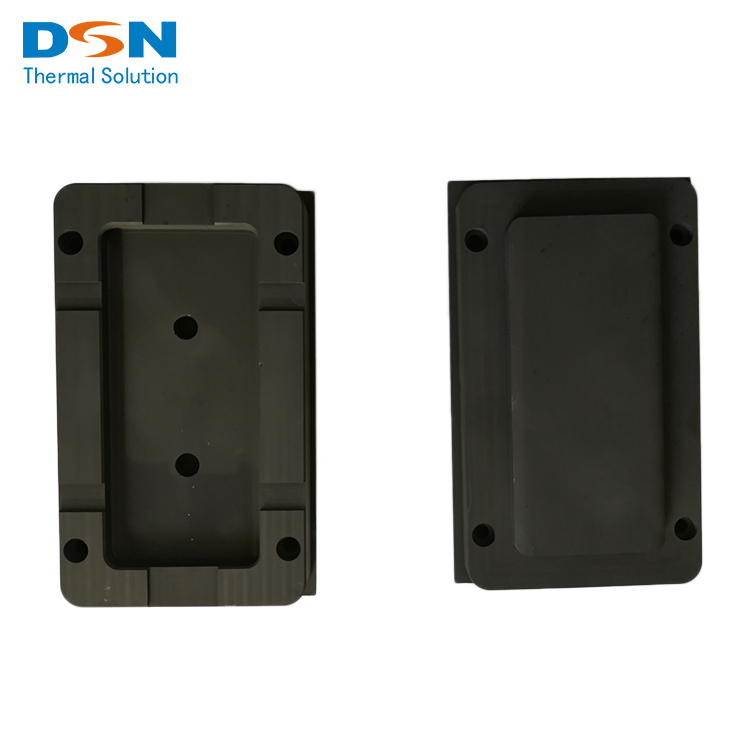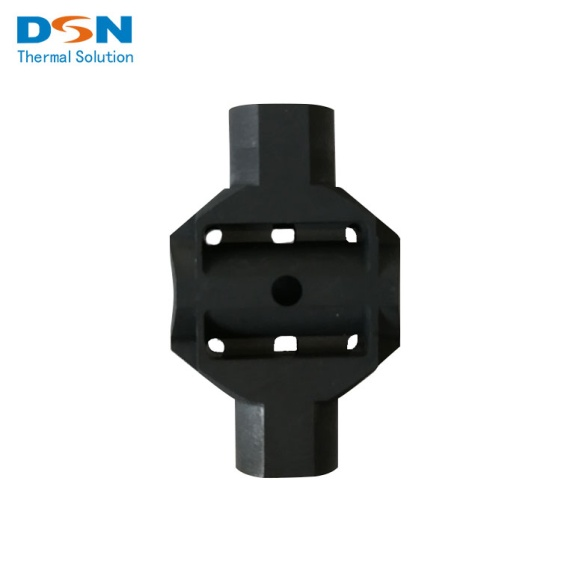English
Views: 1 Author: Site Editor Publish Time: 2014-03-12 Origin: Site








Specialties graphite covers a wide range. There are different understandings and classification methods in the electro carbon products industry, natural graphite products industry and metallurgical carbon products industry. According to the customary classification and interpretation of metallurgical carbon products industry, specialties graphite mainly refers to high strength, high density and high purity graphite products (referred to as "three high graphite"). Three kinds of graphite can be divided into coarse, fine and ultra-fine particle structure in terms of material structure. There are three kinds of specialties graphite in terms of molding, extrusion and isostatic pressing. In addition, vibration molding can also be used to produce specialties graphite.


High quality specialties graphite is produced by isostatic pressing process. According to its main uses, there are: specialties graphite for EDM; specialties graphite for casting mould; specialties graphite for continuous casting of steel, copper or aluminum; high purity graphite for Czochralski single crystal silicon furnace or for smelting precious metals and high purity materials; graphite for synthetic diamond; specialties graphite for and missile technology.
Generalized specialties graphite also includes pyrolytic carbon (pyrolytic graphite), carbon materials for bioengineering, glass carbon, porous carbon and porous graphite, graphite intercalation compounds (such as flexible graphite, fluoride graphite), graphite for laser, etc. Many special carbon and graphite materials are also used in mechanical and electronic industry, such as carbon brushes, carbon graphite bearings, feeding sliders for electric locomotives, and drawing optical fibers. The use of graphite moulds and so on is not described in this paper.
Main types of specialties graphite
Graphite for EDM
EDM is a new processing technology in the mechanical manufacturing industry. EDM can process many harder metals and parts with complex shape and high precision. As tool electrodes of anode, copper or graphite can be used.
Graphite materials used as tool electrodes for EDM must meet the following requirements:
1. The structure is compact and the structure is uniform. There should be no coarse particles and large pore.
2. It has high mechanical strength and good processing performance. It can process complex shapes, sharp angles and thin sheets.
3. Graphite tool electrodes have a certain loss during EDM, which should be as low as possible.
4. The discharge characteristics are stable and the processing speed is fast.
Therefore, the graphite used in EDM generally adopts fine-grained graphite or ultra-fine-grained graphite, and its physical properties are preferably isotropic. So at present, the isotropic graphite with fine grain structure is widely used in the market of EDM graphite materials in China.

Mould graphite
Graphite material is widely used in the foundry industry of machinery industry as pressure casting, centrifugal casting, hot extrusion of super-hard alloy and other processing die. Graphite mould can be used for large train wheels and small precision parts. Graphite mould can be reused for many times. Castings after demolding have high smoothness, and some can be used without further processing. Graphite material used for casting mould should be graphite with compact texture, low thermal expansion coefficient and good oxidation resistance. Graphite used for casting large size castings can be made up of coarse grain size, while graphite used for casting small precision parts must be graphite with fine grain structure.
In mould graphite, the quality requirement of continuous casting graphite by metal is the most stringent. It requires high thermal conductivity, good thermal stability and thermal shock resistance, good lubricity, no infiltration with molten metal, no reaction with casting metal, and easy to be processed into precise size mould.

Graphite for synthetic diamond
Industrial diamond is an important cutting and abrasive material, but natural diamond production is very small and expensive. Graphite and diamond belong to the same carbon element, but their crystalline forms are different. Graphite can be transformed into diamond crystalline forms under high temperature and pressure. As early as 1954, Sweden and the United States succeeded in synthesizing synthetic diamonds successively. China also synthesized synthetic diamonds in the 1960s, and produced special graphite materials for synthesizing synthetic diamonds in the 1970s. The production scale of synthetic diamond graphite produced in China is divided into three categories. The characteristics and uses are shown in the chart.
High purity graphite
High purity graphite generally refers to graphite with more than 99.99% carbon content. Its structure can be divided into three types: coarse particle structure, fine particle structure and ultra-fine particle structure. High-purity graphite is widely used in Czochralski silicon furnace. The basic materials of integrated circuits are mainly silicon single crystal chips. At present, the growth process of silicon single crystal mainly adopts Czochralski method. Other methods include magnetic field Czochralski method, zone method and double crucible method. Graphite parts in Czochralski furnace are consumables. High purity graphite materials are used to process the heating system of Czochralski single crystal silicon furnace.
Another important use of high purity graphite is to process various crucibles for the production of precious metals, rare metals or high purity metals, non-metallic materials. Graphite electrode for spectroscopic analysis is also a kind of high purity graphite, which can be used for spectrochemical analysis of all elements except carbon. Graphite electrode for spectroscopic analysis is formed by extrusion method. The impurity element content of the finished product should be no more than 6*10-5. When preparing standard samples in spectral analysis and collecting impurities by chemical methods, it is necessary to use spectral pure carbon powder or spectral pure graphite powder. The impurity content of these two high purity materials is 6*10-5. In some applications, the carbon content is 99.9995%, and the total ash content is less than 5*10-6. The forming methods of high purity graphite include extrusion, molding and isostatic pressing.

Graphite Material for Nuclear Energy
Graphite is one of the decelerating and reflective materials used in nuclear reactor construction. Early reactors were all graphite reactors. Graphite used in nuclear reactor as structural material is much stricter and more expensive than graphite electrode in selection of raw materials, process control and inspection of finished products. Graphite used in nuclear reactor must possess the following properties: small absorption of slow neutrons, good high temperature strength, high thermal shock resistance, and good deceleration performance for fast neutrons, stable size under irradiation and very little impurity content.
Nuclear graphite must have a higher volume density, because the deceleration of graphite to fast neutron depends on the collision of fast neutron to carbon atoms. The more carbon atoms in unit volume, the better the deceleration effect, so volume density is one of the main indexes of nuclear graphite. Volume density is also directly related to the porosity and permeability of graphite, in order to avoid nuclear fuel and heat carrier. For loss, the porosity and permeability should be reduced to a certain level.
Isotropic graphite
Although the international definition of isotropic graphite needs to be further clarified, it is generally used to measure some physical performance indicators of product diameter direction and length direction and calculate their ratios. Some are expressed by the ratio of thermal expansion coefficient; the simplest is expressed by the ratio of resistivity. Its anisotropic ratio is called isotropic product in the range of 1.0-1.1, and more than 1.1 is called anisotropic product. In addition to ordinary petroleum coke, modified asphalt coke, natural asphalt coke, oxidized petroleum coke, uncalcined raw petroleum coke and natural graphite are also used to produce isotropic graphite.